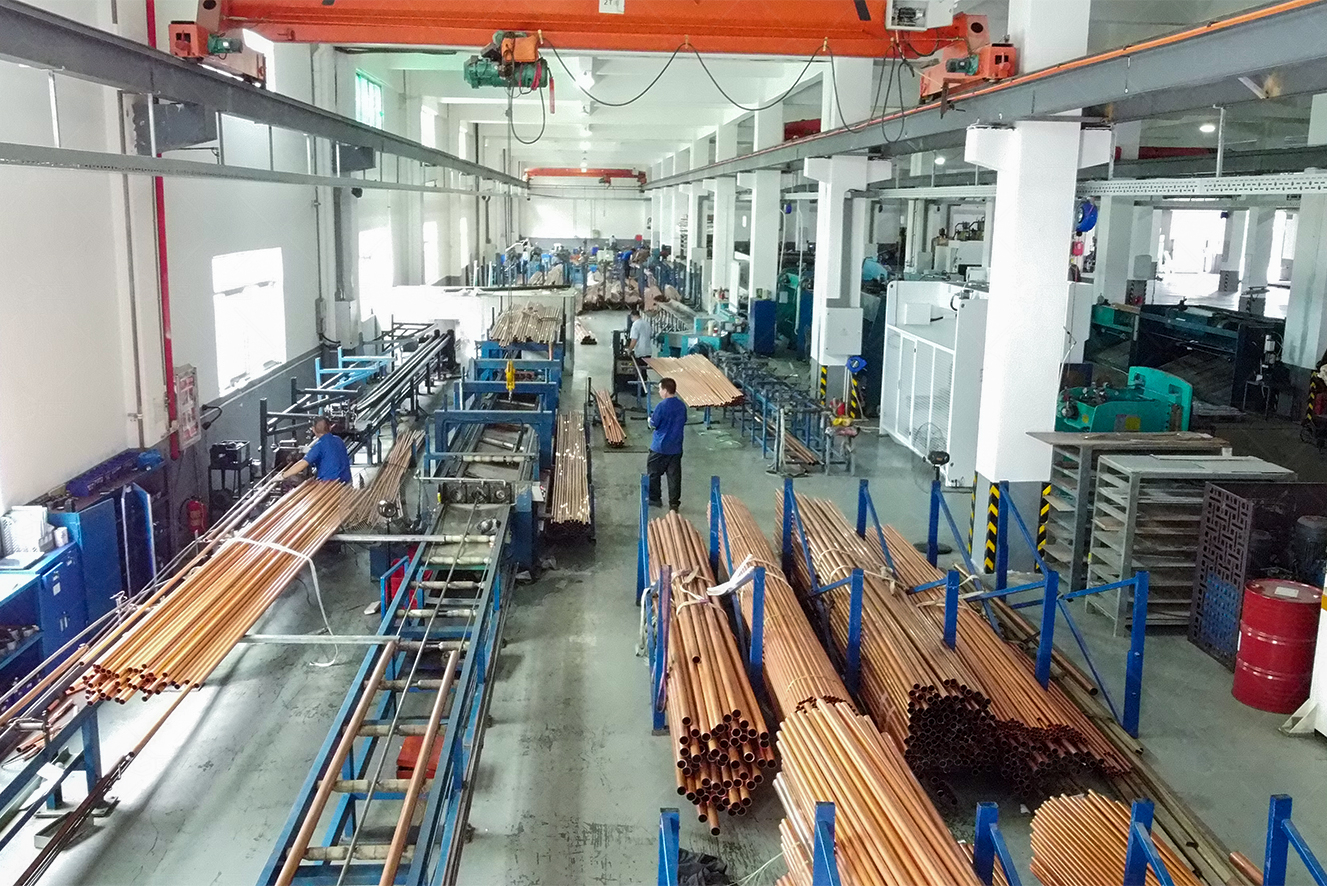Metal desk frames have become an essential component in modern office and home furniture due to their durability, aesthetic appeal, and flexibility in design. Among the key equipment used in the manufacturing process are laser pipe cutting machines, pipe bending machines, and laser welding robots. Each of these machines plays a critical role in shaping the raw metal materials into the final product while maintaining high standards of craftsmanship and production speed.
1. Laser pipe Cutting Machines: Precision and Efficiency in Shaping Raw Material
The initial step in producing a metal desk frame typically involves cutting metal pipes to the required shapes and sizes. Laser pipe cutting machines are instrumental in this stage due to their ability to deliver highly precise cuts with minimal material waste.
A laser pipe cutting machine uses a focused laser beam to slice through metal pipes such as steel or aluminum.
Moreover, laser pipe cutting machine is a non-contact process, which means there is minimal physical stress on the material. Additionally, laser pipe cutting machines can be programmed via CAD software, allowing manufacturers to easily switch between different design patterns without extensive manual setup.
In summary, laser pipe cutting machines provide the foundation for the production of metal desk frames by transforming raw tubular materials into accurately cut components ready for the next stages of manufacturing.

2. Pipe Bending Machines: Creating Structural Curves and Shapes
Pipe bending machines are vital in this phase, enabling manufacturers to produce curved and angled pipes with high precision.
Pipe bending machines operate by applying controlled force to bend metal pipes without causing wrinkles, cracks, or flattening. This process requires careful calibration depending on the pipe’s material, thickness, and desired bend radius. In the context of metal desk frames, bends are crucial for creating legs, support beams, and other structural elements that contribute to the frame’s stability and design.
Modern pipe bending machines use hydraulic or electric motors combined with CNC (Computer Numerical Control) systems. CNC pipe bending machine allows the machine to follow exact bending paths programmed by engineers, ensuring that each bend is consistent and meets the design specifications.
The ability to bend pipes into complex shapes expands the design possibilities for desk frames. The durability of the frame also depends heavily on the quality of these bends since improper bending can weaken the metal and cause premature failure.
Thus, pipe bending machines play an essential role in transforming cut pipes into structurally sound and visually appealing components that will form the skeleton of the metal desk frame.
3. Laser Welding Robots: High-Quality Assembly for Durable Frames
After cutting and bending, the individual metal parts must be joined together to form the complete desk frame. Welding is the most common method for assembling metal components, and laser welding robots have revolutionized this process in terms of quality, speed, and precision.
Laser welding robots combine the benefits of laser technology with robotic automation. Unlike manual welding, which relies on the skill of a welder and can result in inconsistent quality, laser welding robots deliver uniform and repeatable welds. The laser welding robots use focused laser beams to melt and fuse the metal parts at the joint, creating strong and clean weld seams.
The precision of laser welding robot is particularly important for desk frames because it ensures minimal heat distortion and maintains the dimensional accuracy of the assembled product. The narrow heat-affected zone reduces the risk of warping or weakening the metal, which is crucial for maintaining the frame’s structural integrity.
Automation of welding with robots also significantly improves production efficiency. Robots can operate continuously with high speed and do not suffer from fatigue, which increases throughput and reduces labor costs. The welding paths are programmed via software, allowing manufacturers to handle complex frame geometries and customize welding patterns as needed.
Moreover, laser welding robots can work in conjunction with other automated systems, such as laser cutters and bending machines, creating an integrated production line that enhances overall workflow and product quality.
Conclusion
The production of metal desk frames is a sophisticated process that relies heavily on advanced machinery to ensure high quality, efficiency, and design flexibility. Laser pipe cutting machines provide the initial precise shaping of raw metal pipes, pipe bending machines create the necessary structural curves and angles, and laser welding robots assemble these components with unmatched accuracy and strength.
Together, these technologies enable manufacturers to meet modern demands for durable, aesthetically pleasing, and ergonomic metal furniture. As automation and laser technology continue to advance, the production processes will become even more efficient, customizable, and environmentally friendly, setting new standards in the furniture manufacturing industry.

